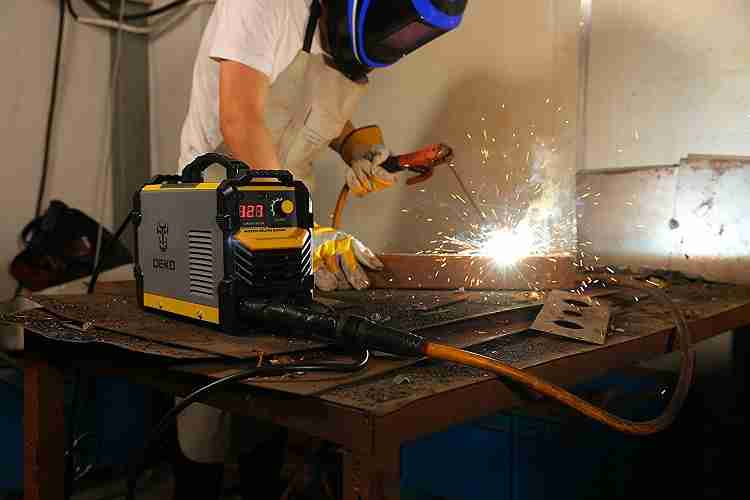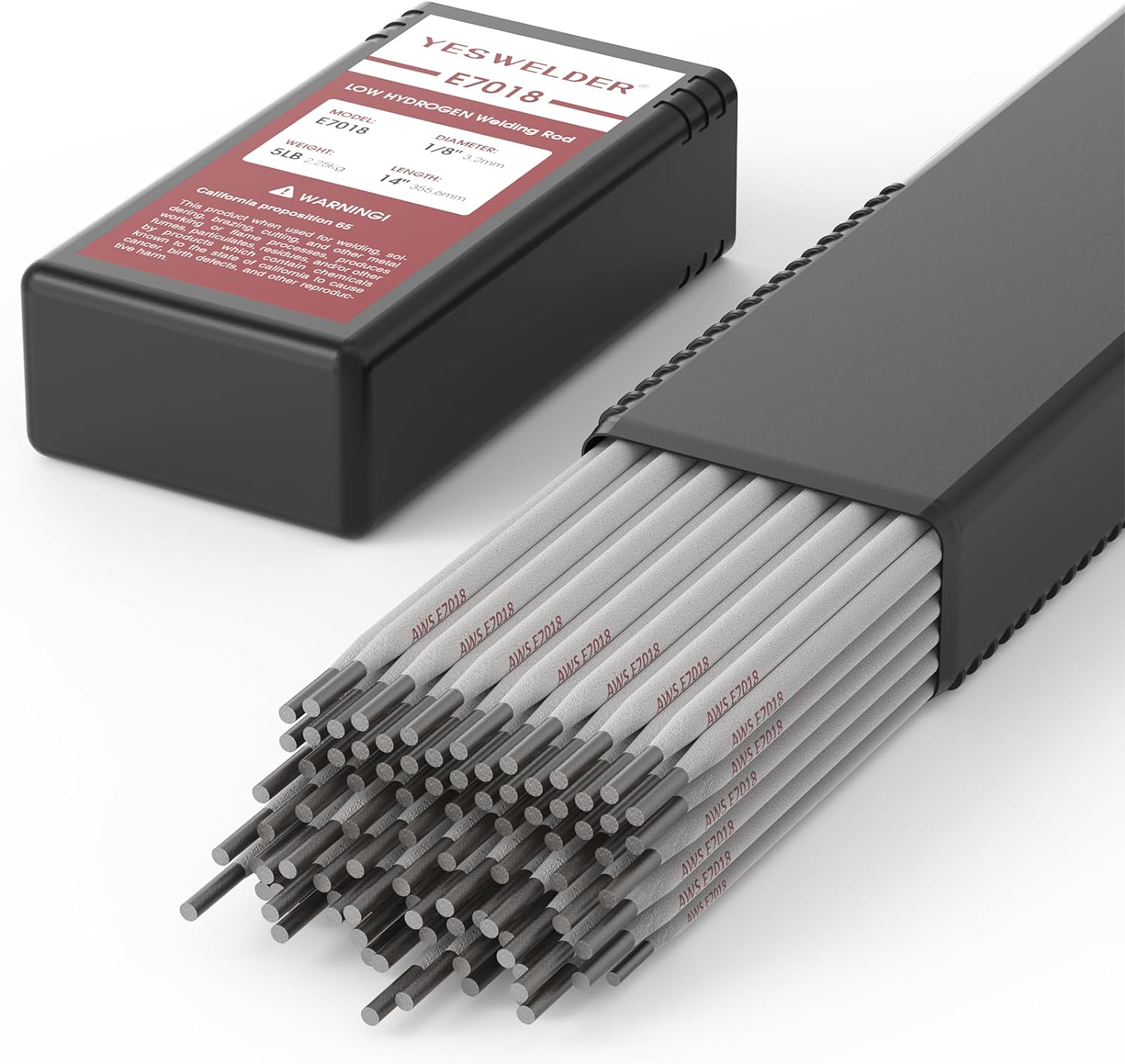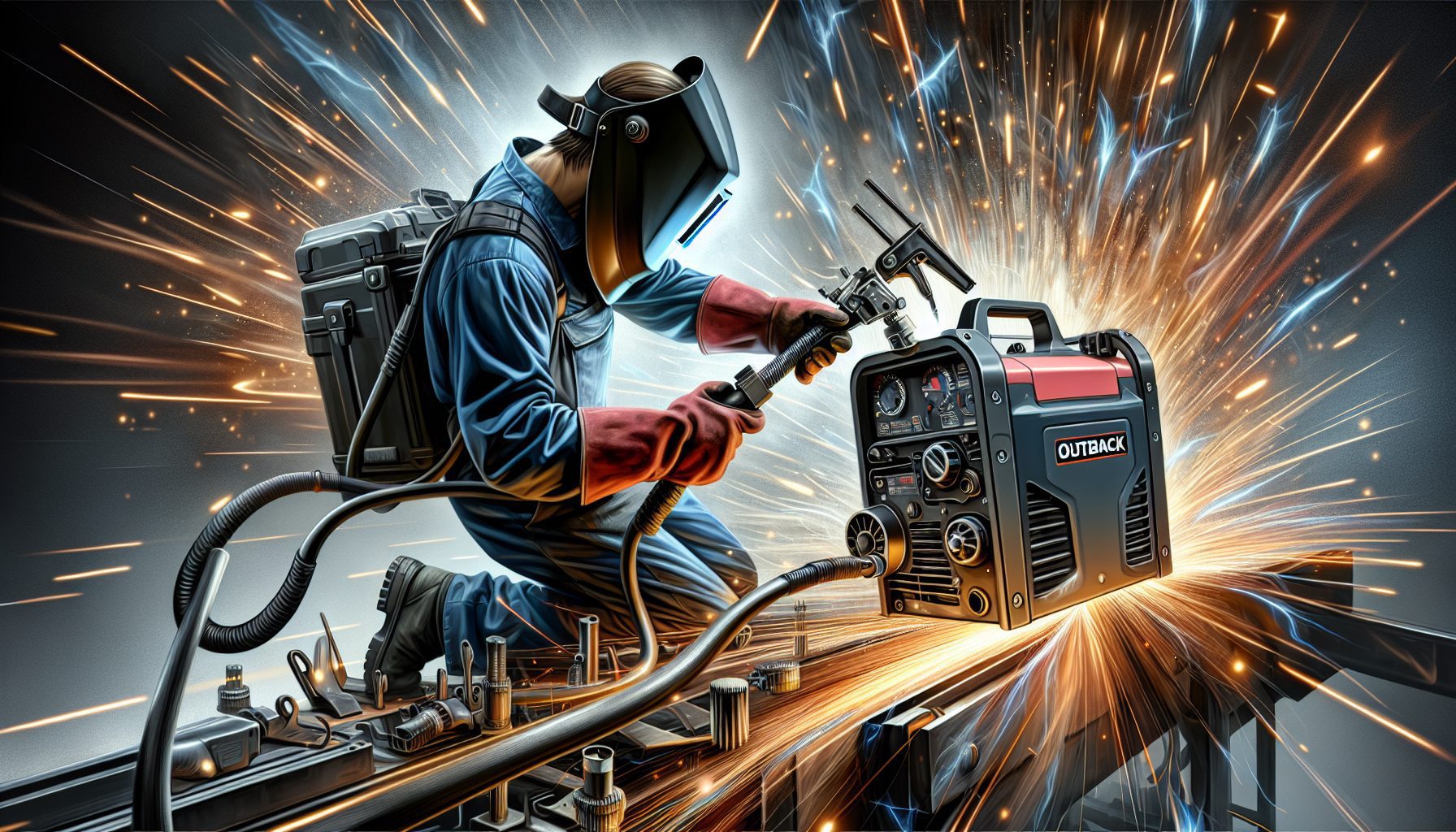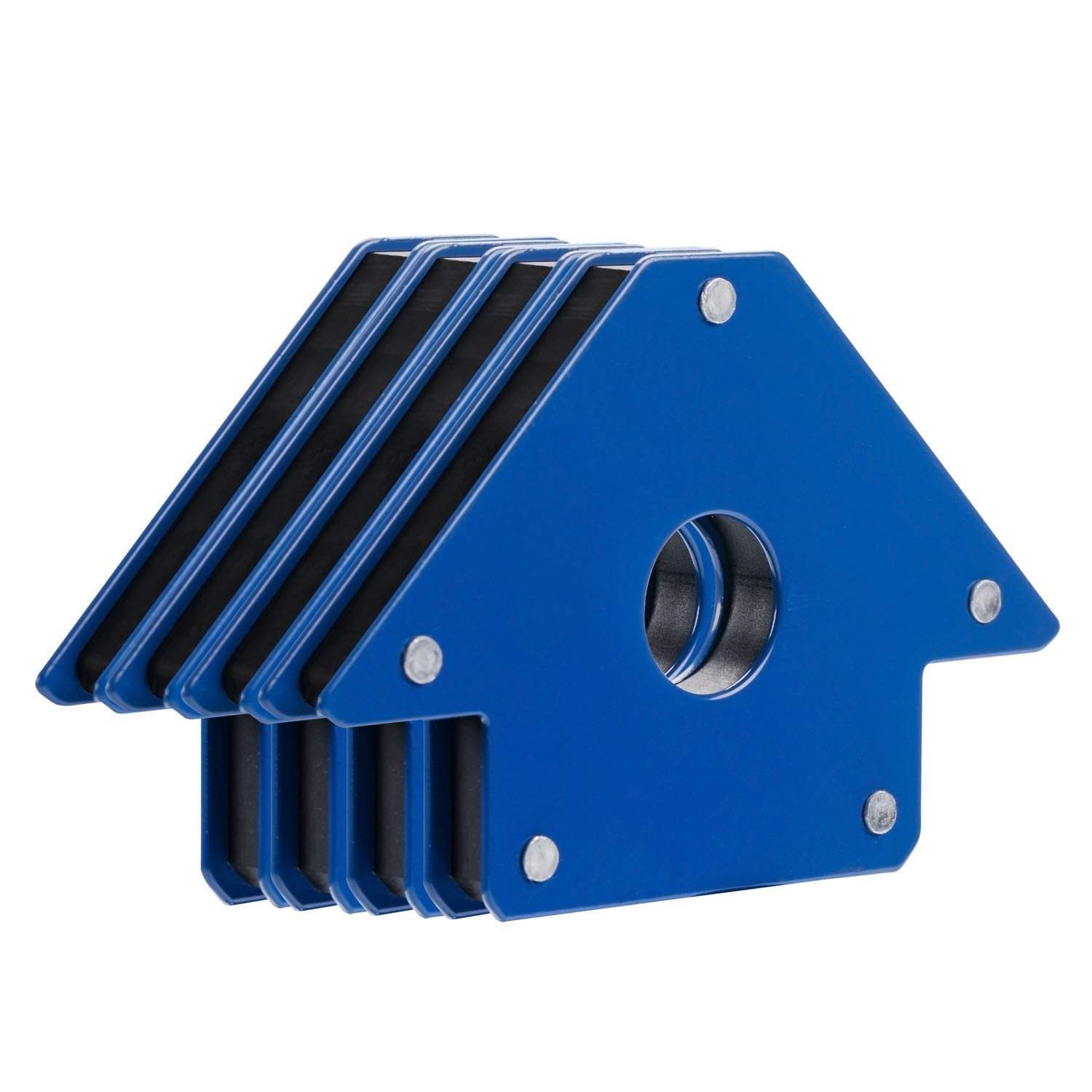Proper weld joint preparation plays a vital role in ensuring the success and structural integrity of welds. Achieving a strong and reliable bond between two metal components requires meticulous attention to detail when it comes to preparing the welding joint. By removing any contaminants, such as rust or paint, and carefully shaping the edges of the joint, we create the optimal conditions for the welding process. In this article, we will explore the importance of proper weld joint preparation and how it contributes to the overall quality of welds.
Ensures Structural Integrity
Proper weld joint preparation is of utmost importance when it comes to ensuring the structural integrity of welded components. By carefully preparing the joint before welding, we can create a strong and stable connection between the pieces being joined. This is crucial in applications where the welded structure will bear heavy loads or be subjected to extreme forces.
Removes Contaminants
One of the key advantages of proper weld joint preparation is the removal of contaminants. Before welding, it is essential to clean the surfaces of the materials being joined to eliminate any substances that could compromise the quality of the weld. By removing contaminants such as dirt, oil, rust, or paint, we can create a clean and reactive surface that allows for better fusion between the metals.
Improves Weld Quality
Another significant benefit of proper joint preparation is the improvement in weld quality. When the joint is well-prepared, it promotes better fusion between the metals being joined. This leads to a stronger and more durable weld that is less likely to fail under stress. By taking the time to properly prepare the joint, we can achieve high-quality welds that meet or exceed industry standards.
Minimizes Defects
Proper weld joint preparation helps to minimize defects in the final weld. By removing contaminants and ensuring smooth and clean joint surfaces, we can reduce the likelihood of issues such as porosity, lack of fusion, or cracks. These defects can weaken the weld and compromise its structural integrity. By investing the necessary effort into joint preparation, we can significantly minimize the occurrence of defects, resulting in a higher-quality weld.
Enhances Welding Efficiency
Efficiency is a vital aspect of any welding process, and proper joint preparation plays a crucial role in enhancing welding efficiency.
Facilitates Penetration
When the joint is accurately prepared, it facilitates better penetration during the welding process. Penetration refers to the depth to which the weld filler metal fuses with the base metal. A properly prepared joint provides the ideal conditions for the welder to achieve adequate penetration, resulting in a stronger weld joint.
Reduces Welding Time
Proper joint preparation also contributes to a reduction in welding time. When the joint surfaces are well-prepared, it allows for better heat transfer and more efficient welding. This can help welders complete their tasks more quickly, resulting in increased productivity and shorter project timelines.
Promotes Consistent Welding
Consistency is key in welding, and proper joint preparation promotes consistent weld quality throughout a project. When the joint is properly prepared, the welder can achieve a uniform weld bead with consistent penetration and fusion. This ensures that each weld joint meets the required specifications, creating a cohesive and reliable final product.
Increases Weld Strength
One of the primary goals of welding is to create a joint that is as strong as or stronger than the base metals being joined. Proper weld joint preparation significantly contributes to achieving this objective.
Provides Adequate Fusion
A well-prepared joint allows for better fusion between the base metals and the filler metal. Fusion is the process of the metals melting and blending together in the weld zone. When the joint is properly prepared, it promotes adequate fusion, resulting in a strong and secure weld joint.
Prevents Weld Failure
Weld failure can be catastrophic, particularly in applications where the welded structure is subjected to high loads or extreme conditions. By ensuring proper joint preparation, we can minimize the risk of weld failure. A well-prepared joint creates a solid and reliable weld that can withstand the demands placed upon it, reducing the likelihood of structural issues or component failure.
Enhances Load-Bearing Capacity
Proper joint preparation also contributes to enhancing the load-bearing capacity of the weld joint. When the joint surfaces are clean and well-prepared, the weld can distribute loads evenly across the joint, preventing stress concentrations. This results in a weld joint that can withstand higher loads and provide the necessary strength and durability required for the application.
Ensures Occupational Safety
Occupational safety is a significant concern in any welding operation, and proper joint preparation plays a crucial role in ensuring a safe working environment.
Reduces Exposure to Harmful Substances
When joint surfaces are not properly prepared before welding, there is an increased risk of exposure to harmful substances. For example, welding on surfaces with coatings or paints can release toxic fumes or gases when heated. By thoroughly cleaning and preparing the joint surfaces, we can minimize the potential for exposure to these harmful substances, protecting the health and safety of welders and other personnel.
Mitigates Potential Hazards
Proper joint preparation helps to mitigate potential hazards associated with welding. By removing contaminants and ensuring smooth joint surfaces, we minimize the risk of issues such as explosions, flash fires, or arc flash incidents. These hazards can occur when there are flammable or combustible materials present on the joint surfaces. Through proper joint preparation, we can significantly reduce the likelihood of these hazardous events, creating a safer working environment.
Prevents Welding Accidents
Welding accidents can have severe consequences, including injuries to personnel and damage to equipment or structures. Proper joint preparation is an essential step in preventing welding accidents. By taking the time to thoroughly clean and prepare the joint surfaces, we can minimize the chances of issues such as weld spatter, porosity, or cracks, which can lead to accidents. When the joint is well-prepared, it allows for better control and predictability during the welding process, reducing the likelihood of accidents occurring.
Improves Weld Aesthetics
While weld strength and integrity are crucial, the aesthetics of the final weld should not be overlooked. Proper joint preparation can significantly improve the visual appearance of the weld.
Creates Clean and Uniform Appearance
When the joint surfaces are properly prepared, it allows for a clean and uniform weld appearance. A well-prepared joint facilitates better control over the welding process, resulting in a smoother and more uniform weld bead. This improves the overall visual aspect of the weld, making it more aesthetically pleasing and meeting higher standards of quality.
Reduces Post-Weld Cleanup
Proper joint preparation can help reduce the need for extensive post-weld cleaning. When joint surfaces are free from contaminants and have been appropriately prepared, there is less weld spatter, slag, or other undesirable residues to clean up after the welding process. This not only saves time but also reduces the effort and resources required for post-weld cleanup.
Enhances Paint or Coating Adhesion
For applications that require painting or coating over the welded surfaces, proper joint preparation is essential. By thoroughly cleaning and preparing the joint surfaces, we create an ideal surface condition for the adhesion of paint or coatings. This ensures that the paint or coating adheres properly to the weld and surrounding areas, enhancing the overall appearance and durability of the finished product.
Optimizes Weld Quality
Achieving optimal weld quality is the ultimate goal in any welding operation, and proper joint preparation is a key factor in attaining this objective.
Fosters Proper Heat Distribution
Proper joint preparation helps foster proper heat distribution during the welding process. When the joint surfaces are well-prepared, heat can be evenly distributed across the joint, resulting in a more uniform and controlled welding process. This helps prevent issues such as excessive heat input, distortion, or localized overheating, ensuring a higher-quality weld.
Prevents Cracking and Distortion
Cracking and distortion are common issues that can compromise the integrity of a weld. By properly preparing the joint, we can minimize the risk of these issues occurring. A well-prepared joint promotes better control over the welding process, reducing the chances of excessive stresses or shrinkage that can lead to cracking or distortion. This results in a stronger and more reliable weld that maintains its shape and integrity.
Avoids Incomplete Fusion
Incomplete fusion occurs when the weld filler metal does not adequately fuse with the base metal, resulting in a weak joint. Proper joint preparation helps avoid this issue by creating an environment that promotes better fusion. When the joint surfaces are clean and properly prepared, they enable the weld filler metal to flow and fuse with the base metal, ensuring complete fusion and a strong weld joint.
Selecting the Correct Joint Preparation
Selecting the correct joint preparation is essential to achieve the desired weld quality and integrity. Several factors should be considered when determining the appropriate joint preparation for a welding application.
Understanding Joint Design
Understanding the joint design is crucial in selecting the correct joint preparation. The joint design refers to the specific configuration of the joint, including the type of joint and the dimensions of the joint surfaces. Different joint designs have different requirements in terms of preparation, and understanding these requirements is essential for a successful weld.
Considering Base Metal Thickness
The thickness of the base metal is another important consideration when selecting the correct joint preparation. Thicker materials may require more extensive joint preparation to achieve adequate penetration and fusion. Conversely, thinner materials may require less preparation to ensure proper heat transfer and avoid issues such as burn-through.
Matching Joint Type to Application
The type of joint being used should be matched to the specific application requirements. Different joint types have different benefits and considerations in terms of preparation. For example, a fillet joint may require less preparation compared to a groove joint. Matching the joint type to the application ensures that the weld joint will meet the necessary strength and durability requirements.
Common Types of Joint Preparations
There are several common types of joint preparations used in welding applications. Each type has its unique characteristics and considerations.
Bevel
A bevel joint preparation involves creating an angled or sloping edge on the joint surfaces. Bevels can be single-sided or double-sided, depending on the requirements of the application. Bevel joints are commonly used for thicker materials and provide excellent penetration and fusion.
V-Groove
A V-groove joint preparation involves creating a V-shaped groove on the joint surfaces. V-groove joints provide enhanced penetration and allow for better access and control during welding. They are often used for thicker materials and allow for a larger volume of weld metal to be deposited.
J-Groove
A J-groove joint preparation is similar to a V-groove but with a curved bottom. J-groove joints are typically used for thicker materials and provide good penetration and fusion. The curved bottom of the groove allows for increased volume of weld metal and easier access for the welder.
U-Groove
A U-groove joint preparation involves creating a U-shaped groove on the joint surfaces. U-groove joints provide excellent penetration and fusion and are commonly used for thicker materials. They allow for a larger volume of weld metal deposition, resulting in a stronger joint.
Single V-Groove
A single V-groove joint preparation is similar to a V-groove but with a single angle on one side of the joint. This type of joint preparation is often used for thinner materials and provides good penetration and fusion.
Square Groove
A square groove joint preparation involves creating a square-shaped groove on the joint surfaces. Square groove joints are commonly used for thicker materials and provide good penetration and fusion. They allow for a smaller volume of weld metal deposition compared to other groove types.
Fillet
A fillet joint preparation involves creating a curved or triangular-shaped weld between the pieces being joined. Fillet joints are commonly used for lap joints, tee joints, or corner joints. They require less preparation compared to groove joints and provide good strength and load-bearing capacity.
Flare-V
A flare-V joint preparation is a combination of a bevel and a V-groove. It involves creating a beveled edge that transitions into a V-groove. Flare-V joints are often used for thicker materials and provide enhanced penetration and fusion.
Corner Position
A corner position joint preparation involves preparing the edges of two pieces that meet at a corner. This type of joint preparation is commonly used for applications where two pieces are joined at a right angle. Proper preparation ensures good fusion and strength at the corner joint.
Importance of Cleaning and Removing Contaminants
Cleaning and removing contaminants from the joint surfaces before welding is crucial to ensure a high-quality and strong weld.
Preventing Porosity
Porosity is a common welding defect that can significantly weaken the weld joint. It occurs when gas becomes trapped in the weld pool and solidifies, creating voids or cavities. By thoroughly cleaning and removing contaminants from the joint surfaces, we can minimize the risk of porosity. Contaminants such as dirt, oil, or moisture can release gases during the welding process, contributing to porosity formation. Proper cleaning ensures that the weld pool remains free from these contaminants, reducing the chances of porosity.
Eliminating Oxide Layers
Oxide layers can form on metal surfaces, particularly those exposed to air or moisture. These oxide layers can inhibit proper fusion between the metals during welding, resulting in weak or incomplete weld joints. By cleaning and removing oxide layers from the joint surfaces, we create a clean and reactive surface that allows for better bonding and fusion between the metals.
Avoiding Hydrogen Embrittlement
Hydrogen embrittlement is a phenomenon where the presence of hydrogen atoms in the metal structure leads to mechanical failure or fracture under stress. Contaminants such as moisture can release hydrogen during the welding process, increasing the risk of embrittlement. By thoroughly cleaning and removing contaminants, we can minimize the potential for hydrogen embrittlement, ensuring a stronger and more reliable weld joint.
Tools and Techniques for Proper Weld Joint Preparation
Several tools and techniques are available to facilitate proper weld joint preparation. These tools and techniques help achieve clean and well-prepared joint surfaces, ensuring optimal weld quality.
Grinding and Beveling Tools
Grinding and beveling tools are used to shape and prepare the joint surfaces before welding. These tools can remove excess materials, create bevels or grooves, and ensure smooth surfaces for proper fusion. Common grinding and beveling tools include angle grinders, bench grinders, and portable beveling machines.
Chemical Cleaning Agents
Chemical cleaning agents, such as solvents or detergents, can be used to remove contaminants from the joint surfaces. These agents help dissolve and remove oils, grease, rust, or paint, creating clean and reactive surfaces for welding. It is important to choose the appropriate cleaning agent for the specific contaminants and base metals involved to ensure effective cleaning without damaging the materials.
Wire Brushes and Abrasives
Wire brushes and abrasives are effective tools for mechanical cleaning of joint surfaces. Wire brushes can remove rust, scale, or other loose materials, while abrasives such as sandpaper or abrasive discs can remove stubborn contaminants or oxide layers. These tools help create clean and roughened surfaces that promote better fusion and adherence of the weld metal.
Power Tools
Power tools, such as grinders or sanders, can be used for efficient and thorough joint surface preparation. These tools can remove excess materials, smooth rough surfaces, or shape the joint according to the desired configuration. Power tools offer speed and precision, making them valuable assets for weld joint preparation.
Grit Blasting
Grit blasting, also known as abrasive blasting or sandblasting, is a technique that involves propelling abrasive media against the joint surfaces. The high-speed impact of the abrasive media removes contaminants, scales, or oxide layers, leaving behind clean and textured surfaces. Grit blasting is particularly effective for removing tenacious or heavy contaminants and is commonly used for larger or more complex weldments.
Ultrasonic Cleaning
Ultrasonic cleaning is a method that uses high-frequency sound waves to generate microscopic bubbles in a liquid cleaning solution. These bubbles collapse near the joint surfaces, removing contaminants through a process called cavitation. Ultrasonic cleaning is a highly effective and efficient method for cleaning complex joint geometries, intricate parts, or components with hard-to-reach areas.
In conclusion, proper weld joint preparation is essential for achieving strong, high-quality, and aesthetically pleasing welds. It ensures the structural integrity of welded components, enhances welding efficiency, increases weld strength, ensures occupational safety, improves weld aesthetics, and optimizes weld quality. Selecting the correct joint preparation, understanding the importance of cleaning and removing contaminants, and utilizing the appropriate tools and techniques are crucial steps in achieving successful weld joint preparation. By paying careful attention to these aspects, we can consistently produce welds that meet or exceed industry standards and fulfill the functional and aesthetic requirements of various applications.


































